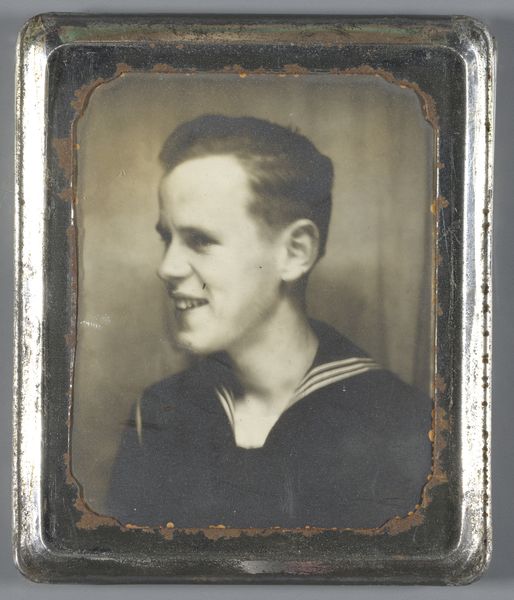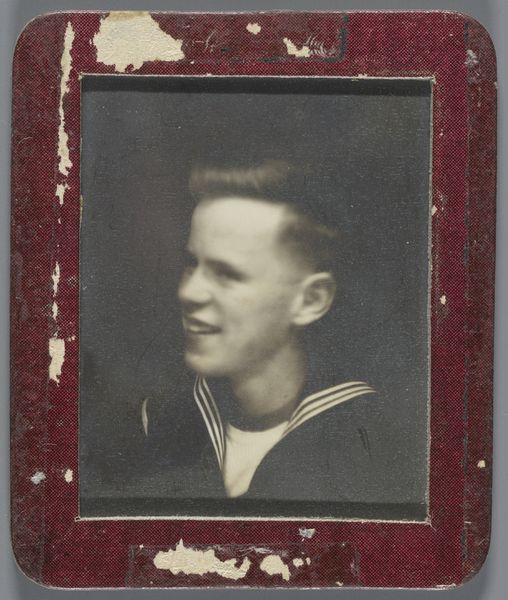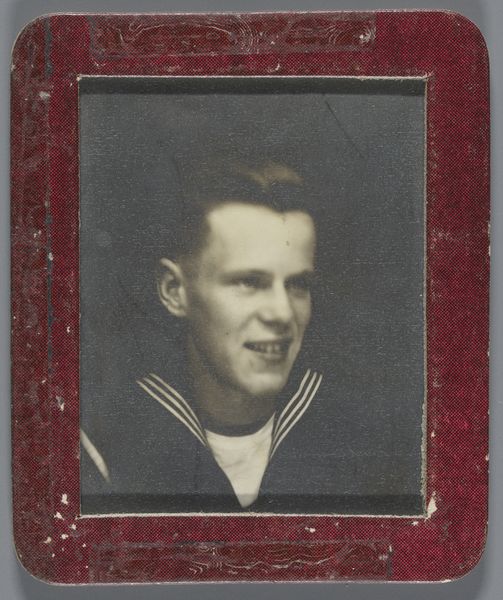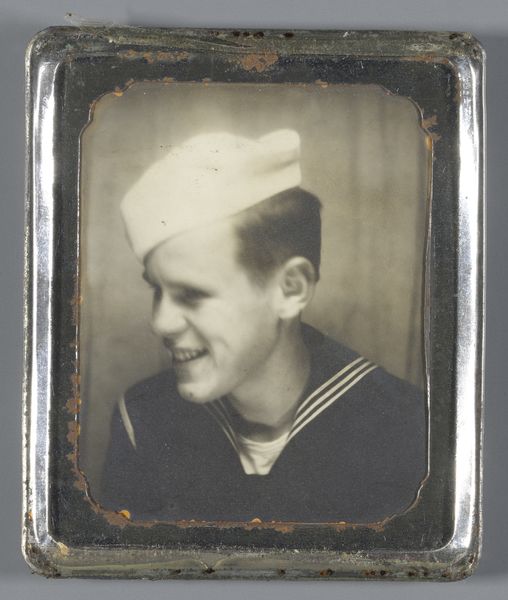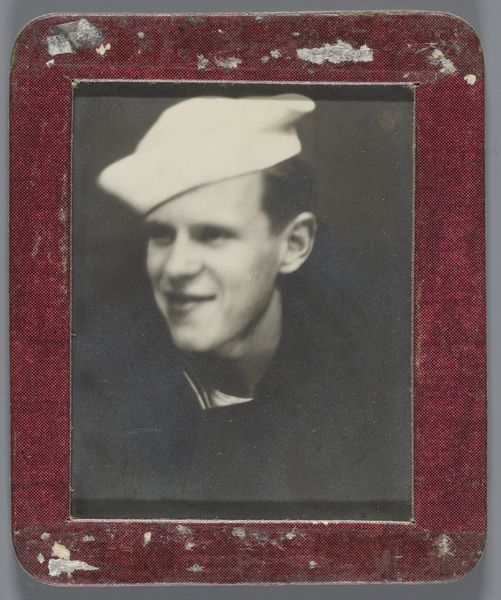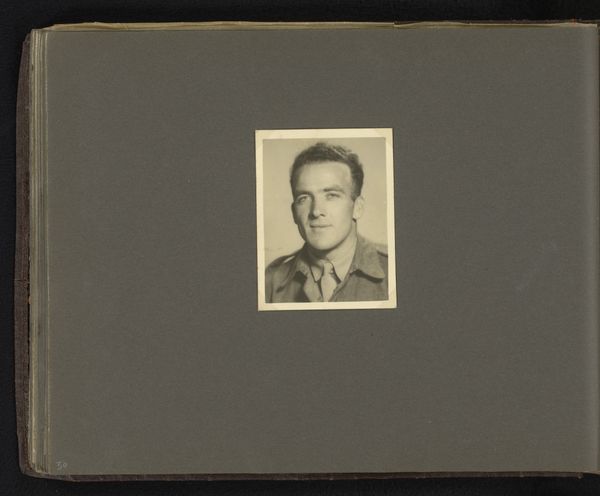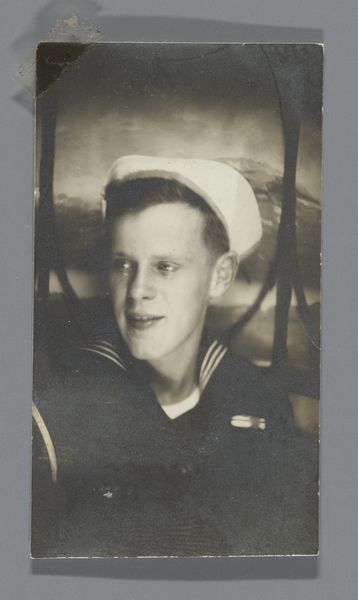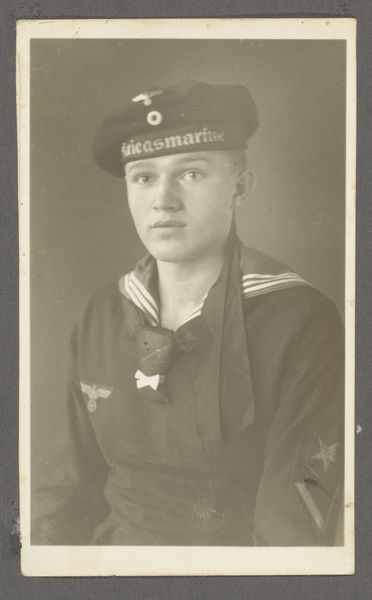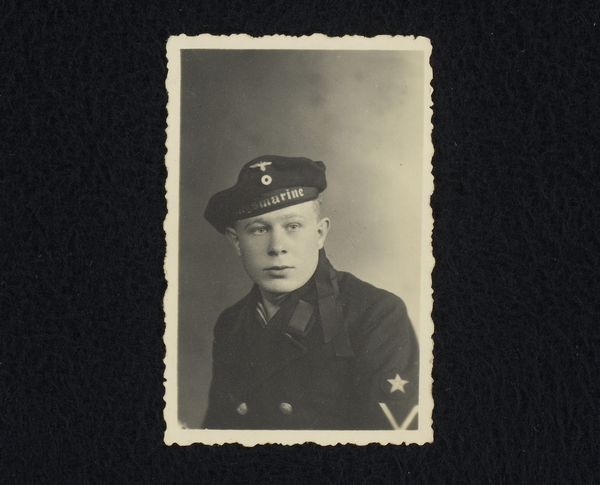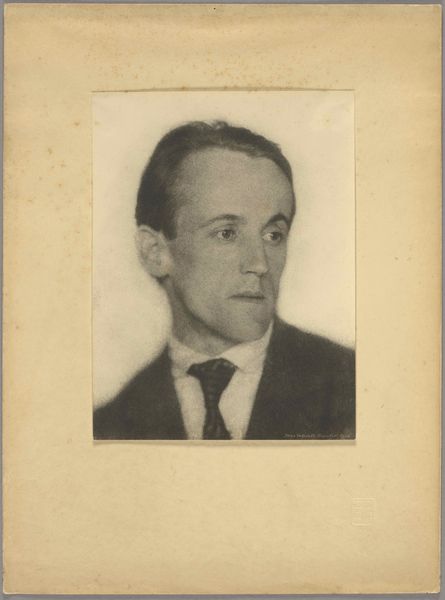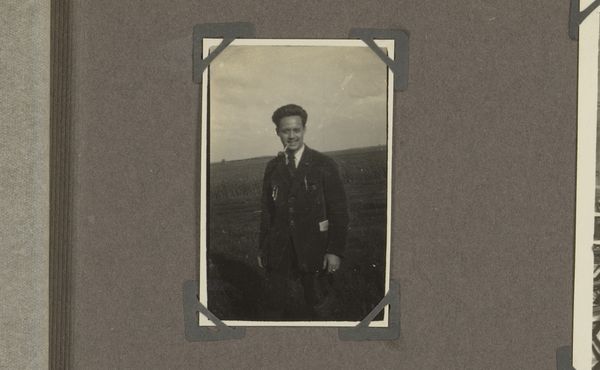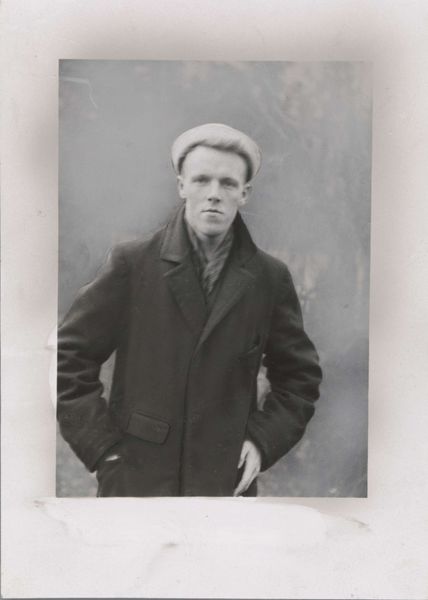
photography
#
portrait
#
photography
#
historical fashion
#
genre-painting
#
realism
Dimensions: height 50 mm, width 63 mm
Copyright: Rijks Museum: Open Domain
Curator: This photograph is titled "William Swanson, matroos, Newport, R.I." It was taken in 1944. The piece, a modest portrait, uses the realism style to depict a sailor named William Swanson during World War II. Editor: It’s such a direct image, isn’t it? Almost melancholic. The soft greyscale tones emphasize the weight of his gaze. I wonder what he’s thinking about here, what uncertainties the war holds for him. Curator: It's compelling to see a personal portrait like this set against the backdrop of such a large-scale global event. Realism, especially as seen here in photography, took on a new power during the war era, documenting the faces and stories of those involved, contributing to a powerful collective memory. Editor: Absolutely, this kind of realistic depiction of soldiers is key to understanding the human cost of war. What’s fascinating is thinking about how images like this circulate. Was this for his family? A sweetheart? It positions William outside of the broader theater of war, offering him humanity and presence, despite the circumstances. Curator: That's an interesting point. Considering this photograph circulated—perhaps to family as you said—then it enters the domain of the everyday. This personal representation then also starts participating in constructing wider understandings of wartime masculinity and patriotic duty. The very existence of the photo acknowledges the power of representation during that period. Editor: Definitely. I’m also struck by the materiality. Knowing that this photograph is held in a frame changes my understanding. Was it on a bedside table? Did it travel with someone? These tangible elements further heighten the feeling of intimacy and also remind us of its function, beyond pure representation, but also memorialization. Curator: Ultimately, the beauty in this piece stems from how it occupies a place between a specific historical and political context and the intimate portrayal of an individual—and how that resonates through history to touch us today. Editor: Agreed, and seeing that hopeful yet pensive face reminds us that those intersectional realities—personal and political—will continue to affect and inspire artistic interpretation and production.
Comments
No comments
Be the first to comment and join the conversation on the ultimate creative platform.
